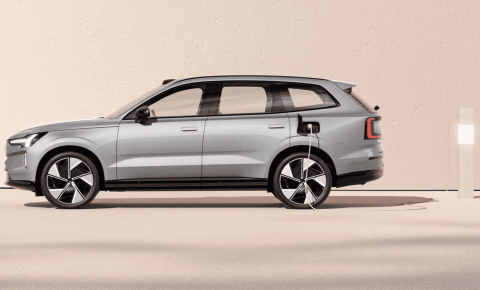Electric Vehicles Growth in Europe and Bottlenecks; Why European Manufactures are Dragging Feet on EV Adoption
As climate imperatives mount and the automotive landscape evolves, European carmakers find themselves at a pivotal crossroads. Despite the promise of a sustainable, electrified future, their transition from internal combustion engines (ICEs) to electric vehicles (EVs) remains sluggish. Rooted in cost constraints, infrastructure deficits, and fierce global competition, this inertia reflects not a lack of ambition—but the weight of multifaceted economic, technological, and strategic challenges. While EVs are poised to redefine mobility across the continent, the path forward for Europe’s automakers demands more than regulatory compliance; it requires structural reform, innovation, and visionary recalibration.
Price Barriers and the Elusive Mass Market
The elevated cost of electric vehicles continues to be a primary deterrent for mainstream adoption across Europe. With average EV prices hovering around €40,000, even generous subsidies—like France’s €5,000 ecological bonus—do little to close the affordability gap for middle-income consumers.
European manufacturers’ fixation on premium SUVs and large models has further skewed affordability. The B-segment, comprising smaller and budget-friendly cars, remains underrepresented in the EV lineup. As a result, electric vehicles remain niche products, struggling to match the widespread acceptance of traditional combustion-engine models.
Charging Infrastructure: The Achilles' Heel of Electrification
Access to reliable and widespread charging infrastructure remains an unresolved challenge. While Norway and the Netherlands boast robust networks, much of Europe, especially rural regions, lags significantly.
This infrastructural void fosters persistent range anxiety, deterring consumers from transitioning to EVs. Despite advances in battery tech and fast-charging systems, the fear of being stranded without power—especially in non-urban zones—continues to erode buyer confidence.
Technological Gaps and Cold Climate Concerns
While EVs are marketed as the future of clean transportation, battery performance limitations—especially in colder climates—paint a different picture. Temperature extremes can reduce range by up to 32%, exacerbating performance anxiety during winter months.
Moreover, concerns about battery replacement costs and long-term durability persist, even with warranties covering 8–10 years or 250,000 kilometers. The potential for expensive maintenance creates a psychological barrier for risk-averse buyers and highlights the need for battery innovation.
Economic Uncertainty and Global Competition Intensify Pressure
European carmakers face the unenviable task of transforming their business models amid inflationary pressures and fragile economic conditions. The aftermath of COVID-19, ongoing geopolitical tensions, and energy crises have strained household finances, making big-ticket EV purchases less viable.
At the same time, Chinese manufacturers have emerged as dominant forces in the global EV market, producing more than half of the world’s electric vehicles. Supported by massive domestic subsidies, resource access, and a growing tech base, Chinese firms have turned Europe into a key export destination—threatening to upend the continent’s automotive supply chain.
Regulatory Complexity and the Rise of E-Fuels
The European Union’s mandate to ban new ICE vehicle sales by 2035 marks a significant policy milestone. However, a recent compromise with Germany introduces a wrinkle: ICE vehicles that run on carbon-neutral e-fuels will be permitted post-2035, offering automakers more time and flexibility.
While this opens a path for synthetic fuels, it also delays the urgency to fully transition to EVs, allowing legacy manufacturers to prolong investments in combustion technology rather than retooling for electric dominance.
Lagging Market Share and Strategic Missteps
Despite early leads in automotive engineering, European brands are rapidly losing ground in the EV race. Companies like Volkswagen, Stellantis, and Mercedes-Benz have ceded global market share to Asian competitors, hindered by high costs and a limited pipeline of innovative electric models.
BMW stands as a rare outlier, having carved out a foothold in the luxury EV space. However, even it faces stiff competition from agile Chinese brands and U.S. players like Tesla, whose scale and cost advantages are difficult to match.
In parallel, many European brands have shifted their focus to plug-in hybrids—a response to consumer hesitation around full electrification, especially in infrastructure-scarce regions.
Recommendations to Accelerate the EV Transition
To regain momentum and avoid permanent displacement, European automakers must enact a strategic reset. Here are five key imperatives:
1. Democratize Electric Mobility:
Focus on expanding EV offerings in the affordable B and C segments, ensuring mass-market appeal beyond luxury niches.
2. Expand Charging Infrastructure:
Governments must collaborate with private players to roll out dense, reliable charging networks, especially in underserved rural areas.
3. Invest in Battery Innovation:
Prioritize R&D in battery efficiency, durability, and recycling, reducing lifecycle costs and enhancing environmental sustainability.
4. Mitigate Consumer Financial Burden:
Design smarter incentives that target middle-income households, possibly including trade-in bonuses, tax credits, or zero-interest financing.
5. Build Strategic Defenses Against China:
Forge regional supply chains, pursue battery independence, and consider joint ventures with tech players to counter Chinese EV dominance.
The Long Road Ahead
The future of electric vehicles in Europe is not in question—the continent is committed to decarbonization and clean mobility. What remains uncertain is whether its homegrown auto giants can navigate the turbulent journey ahead without ceding too much ground to foreign competition.
Without bold action, Europe risks becoming a mere marketplace rather than a manufacturing powerhouse in the EV era. Only through decisive leadership, strategic investments, and cross-sector collaboration can European automakers reclaim their legacy of innovation and lead the continent into a truly electrified future.
